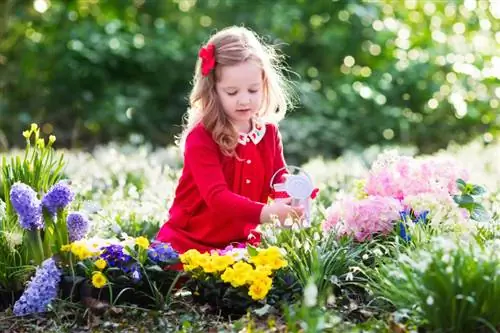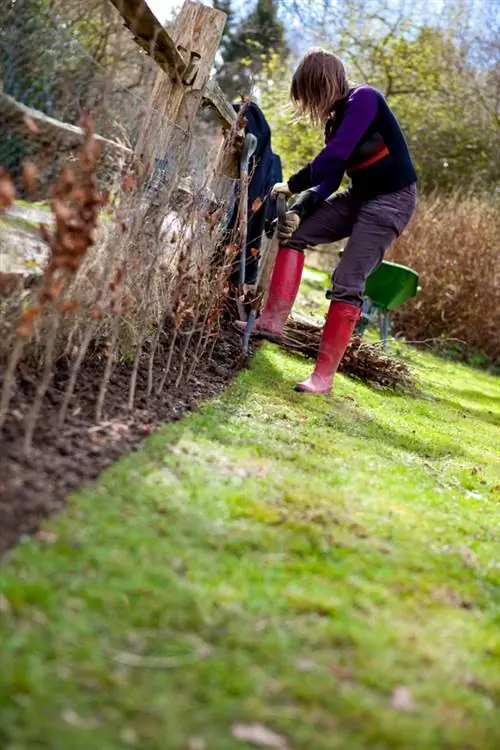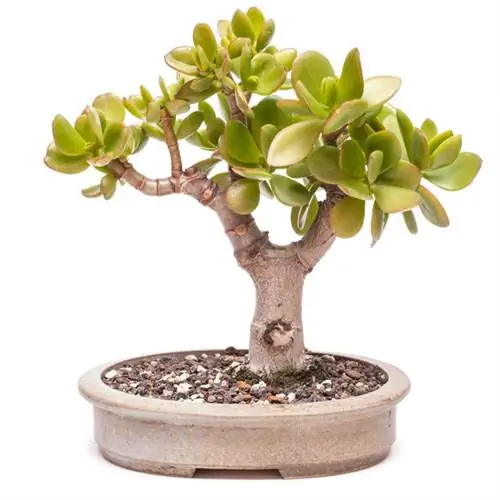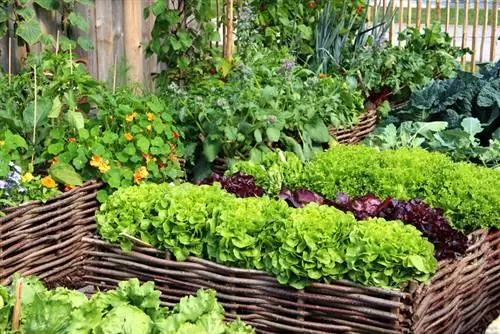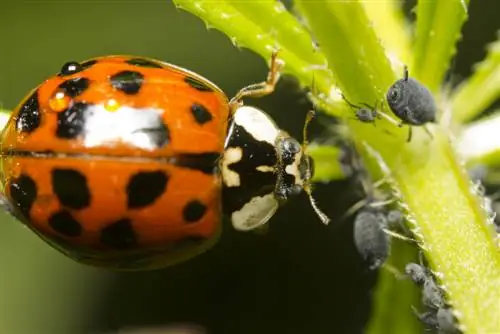- Author admin [email protected].
- Public 2023-12-16 16:46.
- Last modified 2025-01-23 11:22.
A hedge creates a space in the garden that radiates security. Ever since humans have been farming, they have protected themselves from wind and uninvited visitors with green enclosures. In addition, this attractively designed boundary creates valuable habitat for birds, small animals and insects.
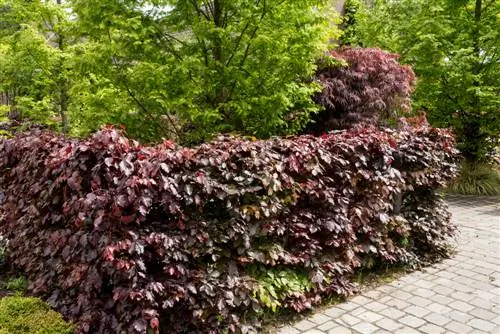
How can I create a hedge in the garden?
Evergreen plants such as arborvitae or privet, deciduous varieties such as field maple and hornbeam or flowering bushes such as forsythia and lilac are ideal for creating hedges in the garden. Pay attention to the intended use, soil conditions and growing conditions when choosing.
Considerations before planting
Before choosing the bushes, you should think about a few questions and plan the hedge carefully:
- Does the fence serve purely as a privacy screen or does the hedge have a predominantly design function?
- Do you want shrubs that grow quickly but need topiary at least twice a year?
- Would you like to be a little more patient until the green wall reaches the desired height? This only requires cutting once a year.
- What is the condition of the soil?
- Do you want the hedge to be opaque all year round or do you want light to penetrate the garden in winter?
- Do you prefer a uniform image or do you find blooming, varied planting beautiful?
Design green hedges
In the following we would like to introduce you to some evergreen and deciduous hedge plants and their properties:
| hedge plant | Features |
|---|---|
| Tree of Life (Thuja) | Is very suitable as a privacy screen because of its dense and fast growth. No special demands on the soil. However, arborvitae should not be cut back too much as they can become bare. |
| Privet | Does not shed its leaves until the end of winter. The different varieties have different leaf colors. |
| Barberry | There are over 400 species of this hedge plant, some of which shed their leaves in winter. The small thorns make pruning difficult. However, a dense barberry hedge also offers good protection against intruders. |
| Field maple | Forms very dense hedges that are a feast for the eyes thanks to their beautiful foliage. No privacy protection in winter as the maple sheds its leaves in autumn. Unproblematic cut. |
| hornbeam | Grows densely and quickly. The beautifully jagged leaves are only partially shed in autumn. Hornbeam hedges should be trimmed twice a year. |
| Columbian Beech | The reddish foliage stands in attractive contrast to other plants. However, the plant is not comfortable with heavy clay soils and waterlogging. |
Flowering hedges
Hedge plantings can also bloom and enchant with their scent. You can let your creativity run wild when designing these hedges, but you should always make sure that the bushes are suitable for the intended purpose and match the nature of the soil and the location.
Be sure to draw a planting plan in which you take into account the planting distances, especially for mixed flower hedges.
Plants that look great in flowering hedges are:
- Forsythia,
- Magnificent spar,
- Cotoneaster,
- Weigela,
- Cherry laurel,
- Copper rock pear,
- wig bush,
- Lilac
- Dogwood,
- Buddleia,
- Snowball
and various others. If necessary, get advice from your trusted tree nursery.
Tip
If space in the garden allows, you should not plant a flower hedge in a straight line. A slightly curved, partly multi-row planting looks more natural and visually appealing.


